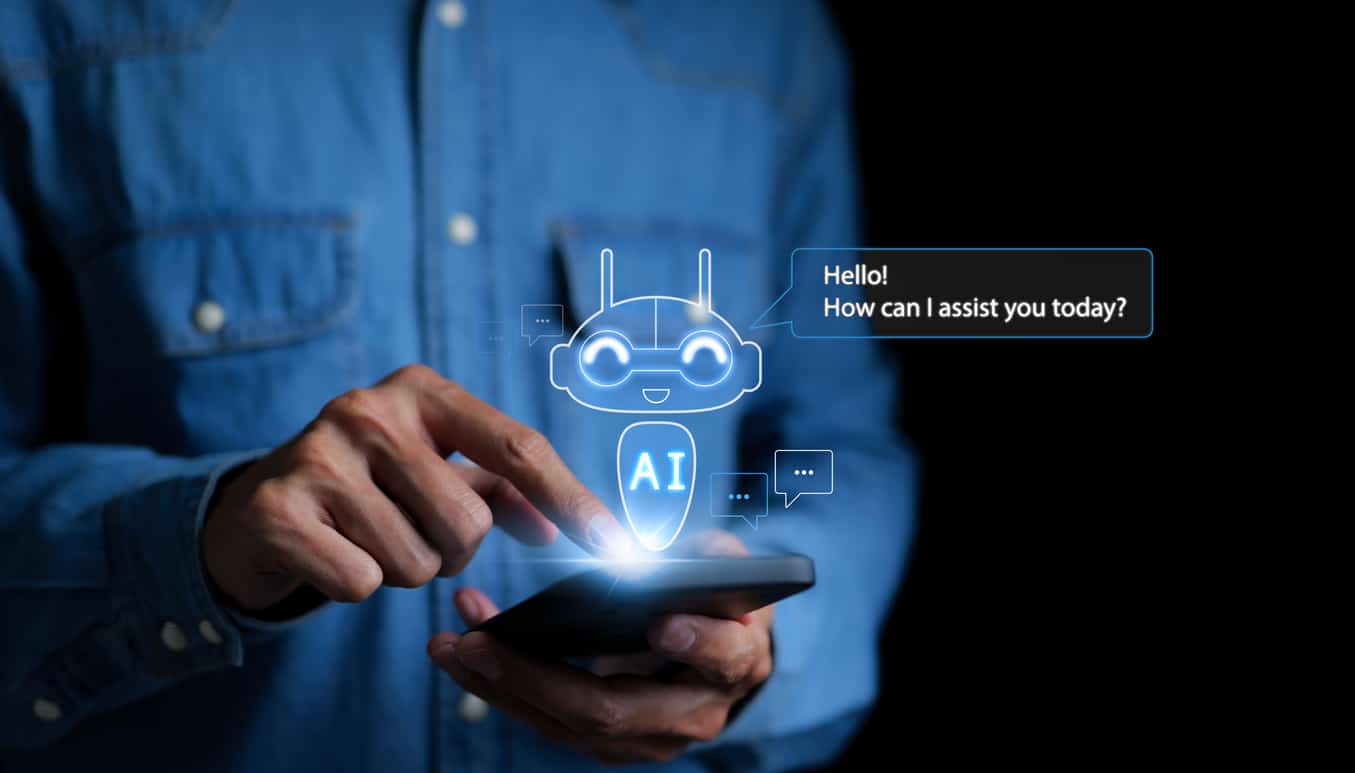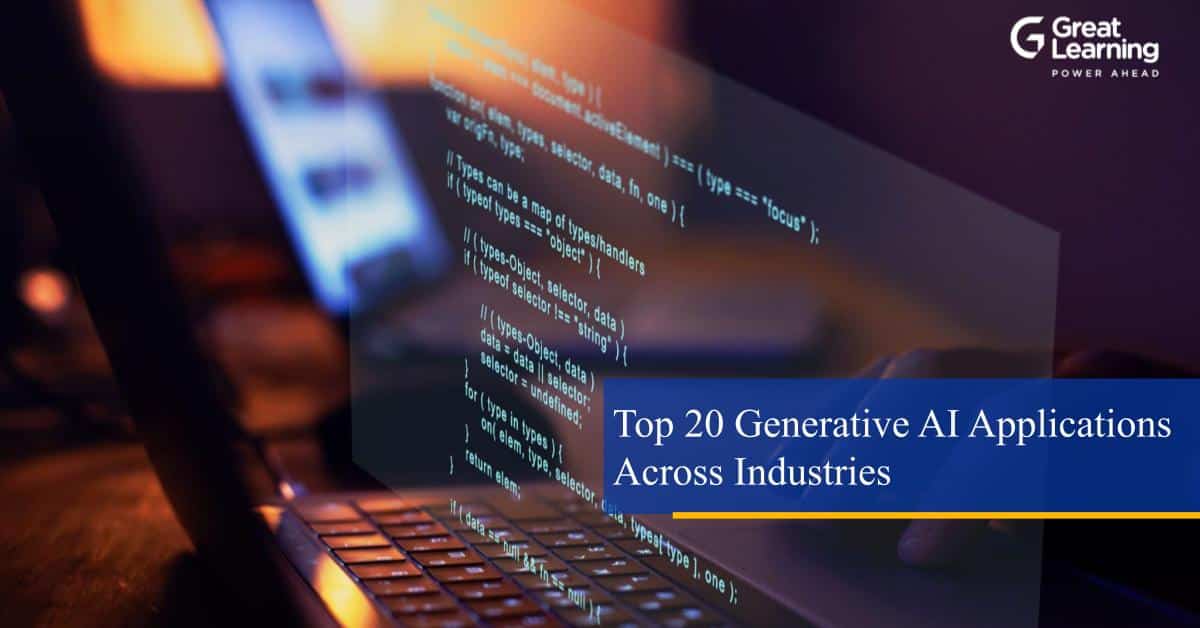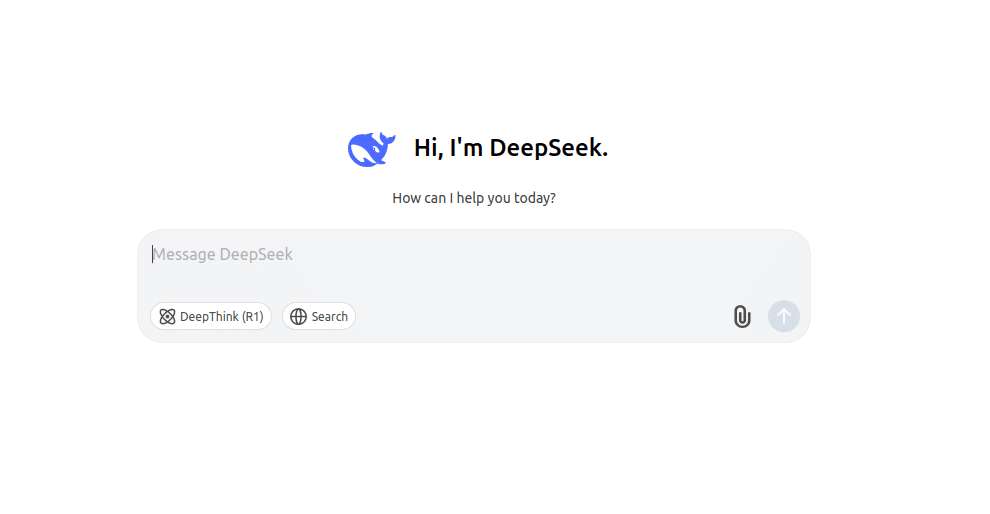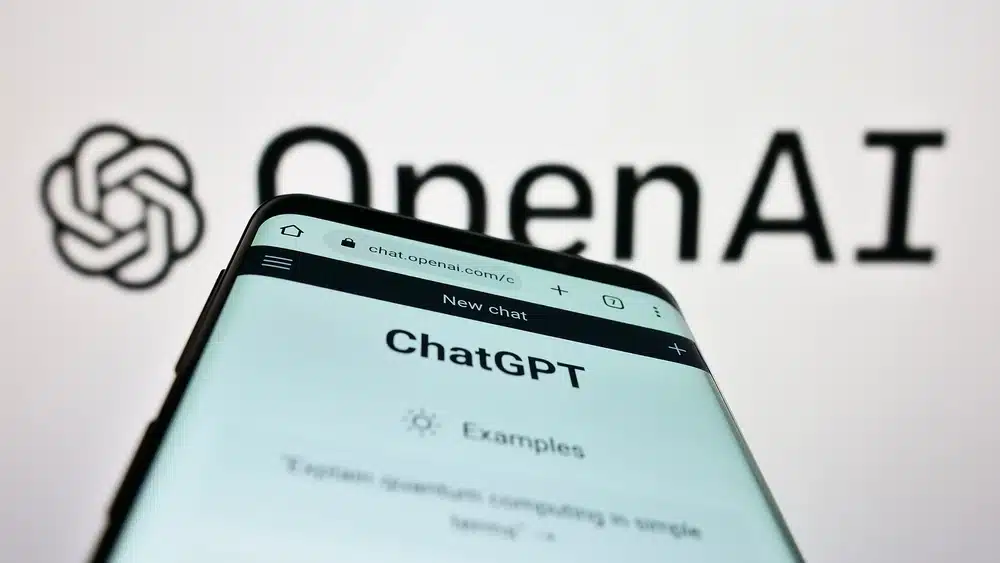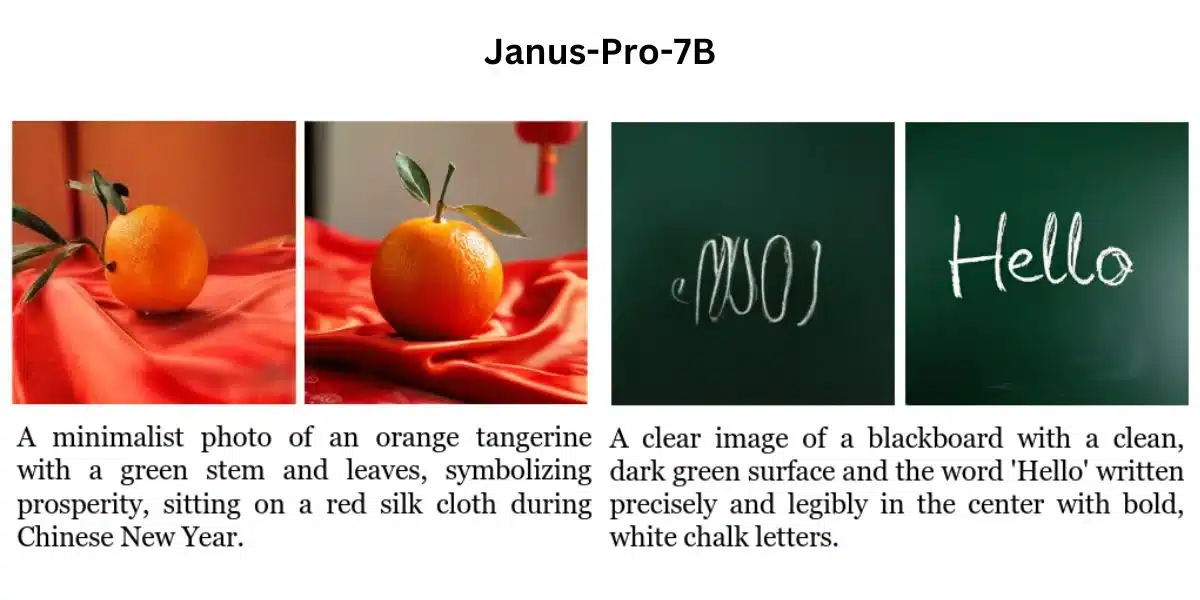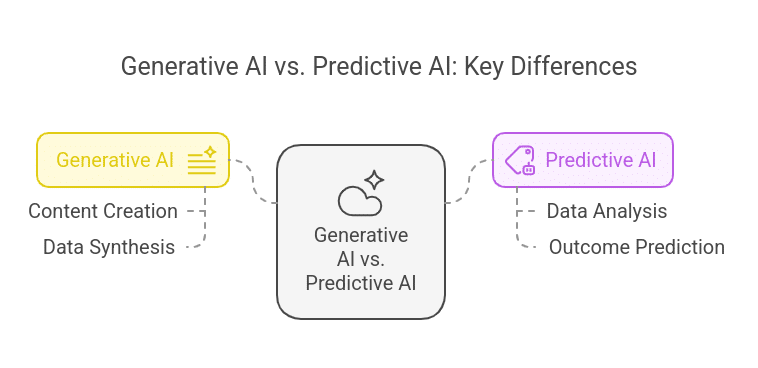Traditional artificial intelligence is undergoing a significant transformation with the emergence of generative AI technology. AI no longer restricts itself to data analysis, as it can now produce artistic creations alongside software code and musical compositions, while simulating human dialogues.
This rapidly developing technology uses AI-based deepfakes and AI-generated novels to merge artificial intelligence with human creativity in ways that erode distinct boundaries.
This article explores the fundamentals of Generative AI and its operation, examining its appeal to both commercial sectors, creative users, and technological innovators.
What is Generative AI?
Generative AI is a specialized artificial intelligence structure that uses pattern recognition to create new content from existing data types, such as:
- Text
- Image
- Music
- Code
- Video
The operation of generative AI differs from that of traditional AI systems, as conventional AI relies on predictions or classification analysis. In contrast, generative AI produces new content in response to prompt instructions.
Genetic Programming Technology 4 (GPT-4) as well as DALL·E manipulate extensive content collections to generate both human-sounding narratives and visual representations alongside additional products..
Learn Generative AI
Great Learning offers a Master Generative AI Course, which enables new learners to pursue training in generative AI technologies and acquire foundational AI knowledge by learning about machine learning, neural networks, deep learning, and generative AI applications, as well as the mathematical basis.
Generative AI vs. Traditional AI
Generative AI and Traditional AI are two different types of artificial intelligence.
Generative AI creates entirely new content - text, images, music, code etc. It does this by learning from massive datasets using complex models like GANs, VAEs, and Transformers (like GPT-4 or DALL·E). Based on unsupervised or semi-supervised learning, Generative AI needs vast and diverse data, and produces novel and often unpredictable output. But it’s complex and can be hard to deploy in real-time without specific optimisation.
Traditional AI analyses existing data to make decisions or predictions based on predefined rules and identified patterns. It uses algorithms like decision trees, logistic regression and support vector machines. Traditional AI works with smaller, more structured datasets, produces more consistent, transparent and ready to use in real-time applications.
Traditional AI is used for tasks like fraud detection, recommendation systems, and chatbots. Generative AI is used for creative and adaptive areas like generating personalized content.
Step-by-Step: How Generative AI Works?
1. Data Collection and Preprocessing
The process of generative AI begins with accumulating extensive datasets containing suitable content, which includes text, images, audio, and other formats. The collected data undergoes cleaning and preprocessing to meet the necessary quality standards for training the machine learning model.
2. Training Neural Networks
The fundamental element in generative AI consists of neural networks, which operate primarily through deep learning models. The series of interconnected nodes (neurons) creates networks using weighted connections to process information received as input.
Adjusting weight values helps reduce discrepancies between network prediction results and actual outcomes during the training process. The system utilizes backpropagation and optimization methods to accomplish this effect.
3. Unsupervised and Semi-Supervised Learning Selection
Generative AI implements unsupervised learning methods for model training, which process unlabeled data to discover essential patterns and structures. The AI system acquires data representations through this method without needing explicit labels.
Semi-supervised learning utilizes a combination of limited labeled samples and extensive unlabeled data, resulting in improved accuracy and efficiency of the learning process.
4. Use of Model Architecture: GANs and VAEs
Two prominent architectures in generative AI are:
- Generative Adversarial Networks (GANs): The system combines two neural network components, known as the Generator and Discriminator, to compete against each other in a game-theoretic model. Within the GAN framework the Generator generates artificial data while the Discriminator functions to distinguish legitimate data from fake data. The adversarial process between two neural networks enables them to enhance their capabilities, ultimately leading to improved data quality over time.
- Variational Autoencoders (VAEs): The encoder-decoder system exists to extract effective data representations. An input data encoding procedure through the encoder produces a latent space map that enables the decoder to reproduce the original data. VAEs demonstrate exceptional capability in generating new data points that closely mirror the theme of the training data.
5. Generation of New Data
After training, generative AI models generate brand-new unseen data that contains attributes matching those of the initial dataset. After training, GAN models become capable of generating authentic face images, and VAE models can create art variations from original works.
Popular Types and Models of Generative AI examples
1. Transformer-Based Models
These models are designed to handle sequential data, particularly language. They use self-attention mechanisms to process and generate text with impressive coherence and context. Transformer models have become the backbone of many recent advancements in natural language processing (NLP) and generation.
- GPT-4 (OpenAI):
One of the most advanced language models, GPT-4 4 is capable of producing human-like text across a variety of topics. It's trained on diverse internet data and can generate essays, answer questions, summarize documents, and even engage in meaningful conversations.
Example: Writing content, automating customer support, and coding assistance. - Claude 3.5 (Anthropic):
A conversational model designed with a focus on ethical AI and safety. It is known for generating contextually relevant and safe responses. Claude is an excellent choice for applications that require thoughtful and balanced conversations.
Example: Virtual assistants, ethical AI-driven content. - Gemini (Google):
Google's next-generation AI, which combines large-scale language understanding with visual capabilities. Gemini models can generate text, images, and even integrate multimedia elements, creating more interactive and immersive outputs.
Example: Content creation for media and advertising, AI-driven design.
2. Generative Adversarial Networks (GANs)
In the generation process, the neural network produces counterfeit information, which the discriminator network attempts to distinguish as either original or simulated data. The generator network develops its capacity to generate increasingly artificial results during training.
- StyleGAN3:
StyleGAN is renowned for generating photorealistic images, particularly of human faces, landscapes, and artworks. Its ability to create high-quality, diverse images has revolutionized the creative fields of art and fashion.
Example: Creating realistic human faces, art, and product design concepts. - BigGAN:
BigGAN generates high-resolution images using a large-scale architecture, enabling the generation of photorealistic images with diverse features. It’s commonly used in fields requiring high-quality image generation.
Example: Scientific visualization, fashion design, gaming assets.
3. Variational Autoencoders (VAEs)
VAEs are generative models that learn to encode input data into a compressed representation and then decode it back to generate new data. They are often used for image generation and are highly efficient for working with structured data.
- VQ-VAE-2 (DeepMind):
A hierarchical VAE model that works by compressing data into discrete codes, which are then used to generate high-quality images. It also has applications in video and audio synthesis.
Example: Image generation, video creation, speech synthesis.
4. Diffusion Models
These models generate new data by reversing a diffusion process. Essentially, they begin with random noise and gradually transform it into structured data, such as images, making them highly effective for creating detailed and diverse content from scratch.
- Stable Diffusion:
An open-source model that generates high-quality images from textual descriptions. It’s known for its ability to create intricate visuals with a high degree of creativity and realism.
Example: Art generation, product design, conceptual visuals. - Midjourney:
A highly creative and artistic AI model that excels in generating abstract and artistic visuals based on text prompts. Midjourney has gained popularity in the artistic community for its ability to create unique and striking images.
Example: Digital art, illustrations, creative advertising visuals.
5. Autoregressive Models (ARMs)
Autoregressive models generate data one step at a time, with each new element conditioned on the preceding data. They excel at tasks like text generation, where the output depends heavily on prior context.
- CTRL:
This model is designed to control the style and structure of text generation through the use of specific control codes. It’s used to generate text with a clear intent or structure, making it suitable for more targeted applications.
Example: Generating product descriptions, automated journalism, and creative writing with specific constraints.
6. Multimodal Models
These systems possess the ability to manage the understanding and creation of multiple data types, ranging from text to images and audio, simultaneously. Multimodal models operate on complex tasks that demand a combination of several input and output components.
- OpenAI’s DALL·E 2:
An AI system with multiple modes operates to turn written suggestions into visual outputs. The abilities of DALL·E 2 extend to generating realistic images from descriptions that may be abstract or imaginative.
Example: Graphic design, content creation, and visual storytelling. - CLIP:
The embedding space of CLIP enables the mapping between images and text, allowing for the generation of images from text descriptions or the production of text from images.
Example: Text-based image generation, cross-modal search engines.
Use Cases And Applications Of Generative AI

1. Content Creation
With user-driven input, generative AI enables the automatic production of content, including text, images, and videos. The industries of journalism, along with advertising and social media management, now operate with greater productivity because of this technology.
- Examples:
- Text Generation: Tools like GPT-4 can create blog posts, articles, marketing copy, and even poetry from simple prompts.
- Image and Video Generation: The neural network software DALL·E 2 and Midjourney can convert written specifications into precise photos, as well as the Generative Adversarial Networks (GANs) create realistic visuals for advertising and media purposes.
- Benefits:
- Reduces time spent on generating repetitive content.
- Boosts creativity and provides fresh ideas for writers and designers.
- Enhances personalization in content delivery.
2. Healthcare & Drug Discovery
The healthcare industry is undergoing revolutionary changes due to Generative AI, which enhances drug development, improves individual patient treatment programs, and predicts healthcare outcomes that were previously impossible. The technology develops unique chemical compounds and creates biological simulations, while recommending new medical solutions.
- Examples:
- Drug Discovery: Models like DeepMind's AlphaFold predict protein folding, speeding up drug development.
- Personalized Medicine: AI systems tailor customized treatment plans to individual patient data, thereby enhancing outcomes for various diseases, including cancer.
- Benefits:
- Reduces the cost and time required for drug development.
- Helps in identifying potential treatments faster and more efficiently.
- Supports precision medicine by tailoring healthcare solutions to individual patients.
3. Design & Product Development
Through generative AI, the design process receives assistance with product development, as well as in architectural and industrial design applications. The system creates innovative product designs by specifying parameters that generate efficient processes, resulting in purpose-built, high-quality outcomes.
- Examples:
- Product Design: AI tools can create 3D models of products, ranging from consumer electronics to automobiles.
- Architecture: Generative AI models, such as GANs, are utilized to design architectural layouts and urban planning projects, optimizing space, functionality, and aesthetics.
- Benefits:
- Increases creativity in design.
- Reduces time and cost associated with prototyping.
- Generates optimized solutions that humans might not easily conceive.
4. Customer Support & Virtual Assistants
Generative AI enhances customer service solutions by enabling virtual assistants to communicate with customers in a manner that mimics human interactions. Through their programming, customers can obtain answers and solution recommendations that increase satisfaction while lowering response durations.
- Examples:
- Chatbots enable the development of highly effective automated systems through GPT-4 transformers and their related models, which process complex customer queries in real-time.
- The technology behind Virtual Assistants utilizes AI models to operate personal digital assistants such as Siri and Alexa, which generate personalized suggestions and responses based on individual user tastes.
- Benefits:
- Reduces workload on human customer support agents.
- Provides 24/7 assistance and reduces response times.
- Improves user satisfaction with personalized interactions.
5. Entertainment & Media
The entertainment industry is undergoing substantial changes with the advent of Generative AI, which aids in content creation, music scoring, scriptwriting, and video game development. This technique enhances content creation speed while simultaneously producing either equivalent or superior creative outcomes.
- Examples:
- Music Composition: AI models, such as OpenAI’s MuseNet, can generate complex musical compositions across various genres.
- Movie Scripts: GPT-4 can be used to generate movie scripts, dialogue, and storylines based on specific inputs, helping screenwriters or even creating content autonomously.
- Video Game Development: AI models can generate realistic environments, characters, and even entire levels for video games.
- Benefits:
- Increases efficiency in content production.
- Reduces costs in creative industries.
- Provides endless opportunities for new and innovative content creation.
Strengths Of Generative AI
1. Enhanced Creativity
Generative AI models generate new, diverse content, including text, images, and music, by recognizing patterns in data. The model's ability to create new ideas fosters creative solutions across multiple fields of study.
2. Increased Efficiency
Generative AAI enables professionals to automate repetitive work, allowing them to dedicate more time to essential tasks. Generative AI technology enables projects to be completed more quickly, resulting in improved productivity outcomes.
3. Cost Reduction
Automating operational tasks with generative AI technology results in decreased expenditure while requiring fewer workers for specific operations, thereby reducing overall operational costs.
4. Personalization at Scale
Through Generative AI, users can generate personalized content and experiences, which improves user satisfaction and engagement because these deliver content tailored to their individual preferences and needs.
5. Democratization of Creativity
Generative AI removes creative obstacles by enabling untrained individuals to generate high-quality content, thereby facilitating greater inclusivity in creative pursuits.
Conclusion
The use of generative AI technology is transforming multiple industries through both creativity enhancement and efficiency improvement, while offering personalized experiences to users.
The Postgraduate Program in Artificial Intelligence and Machine Learning, presented in collaboration with the University of Texas at Austin by Great Learning, equips students with the essential skills necessary to advance their careers in this rapidly evolving field.
The comprehensive program encompasses vital subtopics, including Generative AI, alongside Large Language Models (LLMs) and MLOps, to equip students with the necessary skills for leading AI development.
